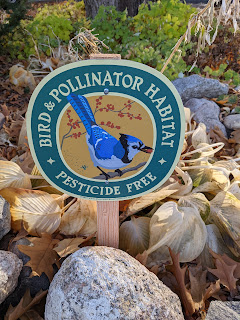Red Oak House Winter Notes No. 6
Journal entries
20 October 2021 3:15 p.m.
Sunny calm autumn day. A very large & healthy coyote just ran up my street, ahead of my vehicle a full block, and then zipped behind the house next to Red Oak House, in broad daylight (no photo, I was driving). I grew up in Slope County & I know what I saw, although at first, I told myself it must be a loose dog. Hope it makes a dent in the abundant rabbit & feral cat population! Sure enough, I'm seeing more and more reports of urban coyotes in Bismarck. And, yes, I know they will kill our pet dogs and cats, even in fenced yards. And, yes, I know they can be rabid. As my dear Aunt Frances used to say "I didn't just fall off the turnip truck!"
In other news, while I was working in the yard, another neighbor caught my attention because she was standing at the base of her large tree saying "Shoo!" "A cat?" I asked. "No," she replied, "Woodpeckers." That surely piqued my curiosity. The claim is that woodpeckers are killing a mature crab apple tree. They surely are doing some damage to some of the softer wood siding in the area houses. Our siding is rock hard, although I do hear the tentative drilling. I calmly explained to the neighbor that woodpeckers only drill in dead wood, but I don't think she was convinced. And I went about my business, which included filling the suet feeder for the woodpeckers.
This summer a local spray company started up spraying next door early one morning, and, as so frequently happens in North Dakota, the wind came up. Jim was working in the organic vegetable garden and I alerted him. He asked the company to stop, but it was too late. The drift was all the way across our yard. Upon the advice of counsel, I called the ND Ag Dept and filed a complaint. Someone was sent out to investigate and I documented the "incident" with photographs. The wheels of investigation ground on and eventually I received a letter telling me that the company had been cited. All I can hope for is that the word gets out. I do know that my nice neighbors would not want our relationship to be damaged. We co-exist as best we can. Straightaway I ordered (via Etsy, directly from a US-made artist) this sign and staked it in the ground before the hard freeze. I've been contemplating this as our approach to the yard evolves and becomes a little less labor-intensive and more in harmony with nature.
Now there is a blanket of snow and the birds are feasting and we are hunkered down for a winter of indoor projects and reading. The "lists" are long and we are ever so grateful for the precipitation in the midst of a historic drought.
























































